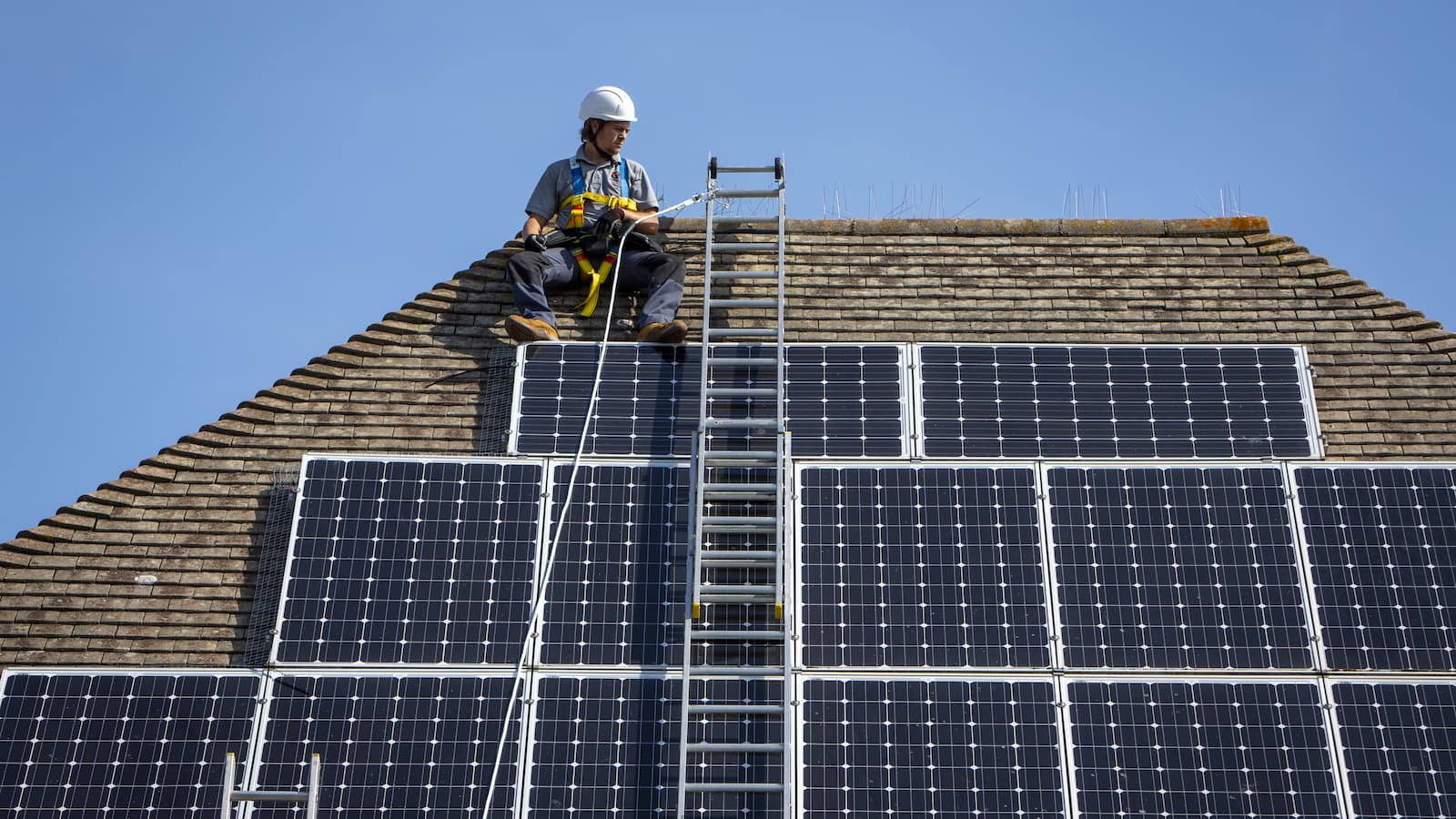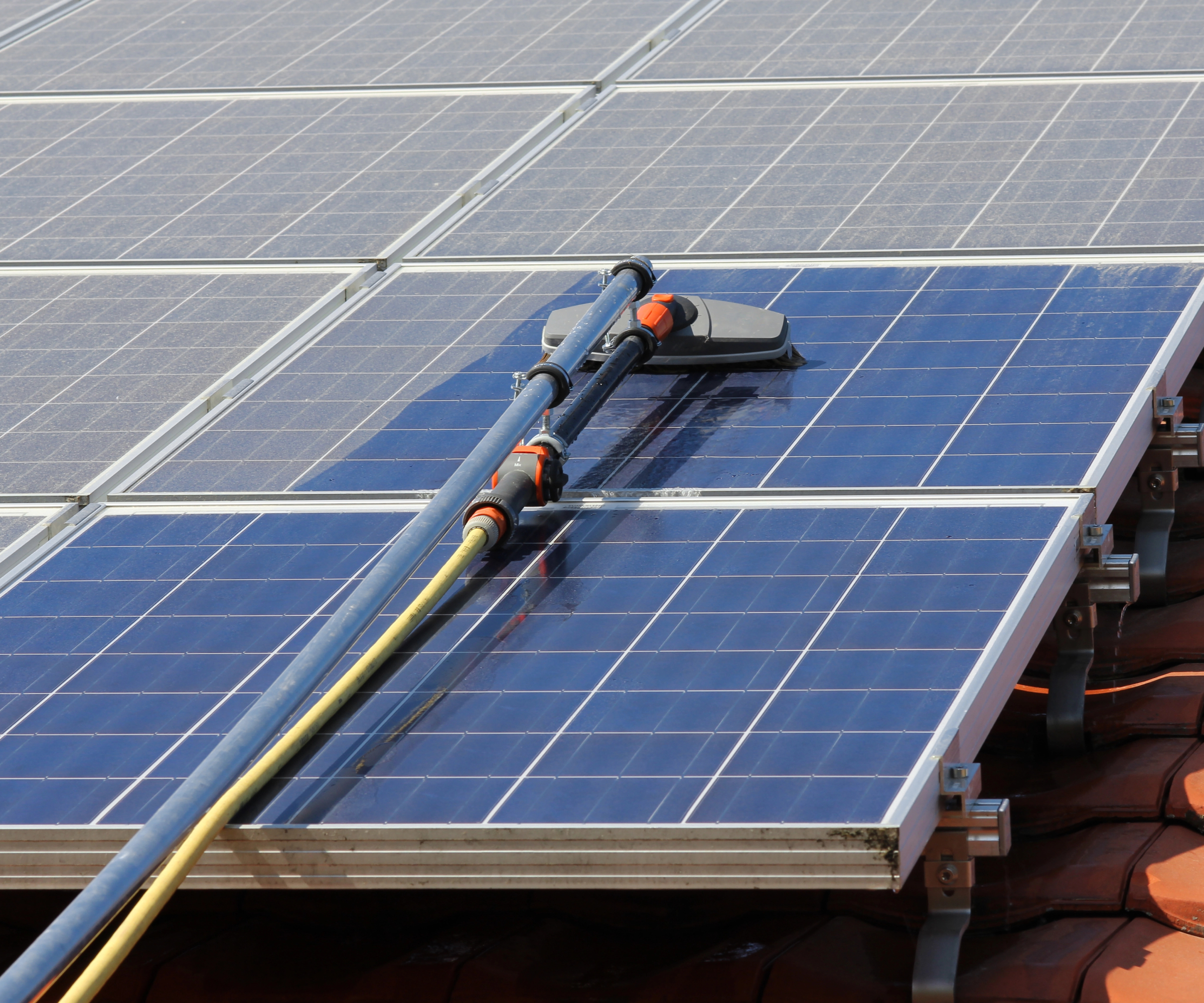Could solar panel gel be the clever addition that makes PV systems work better in heatwaves and last up to 200% longer?
Research suggests innovative solar panel gel can cut solar panel temperatures by 14°C, boosting power and lifespan during heatwaves

As the UK faces more frequent and intense heatwaves, a new cooling gel developed by international researchers offers a promising way to protect solar panels from overheating.
This material can lower panel temperatures by up to 14.1°C, boosting energy output by nearly 13% while extending the lifespan of solar panels by more than 200%.
By reducing the damaging effects of heat, this affordable, low-maintenance gel could help make solar power more reliable during hot spells – a growing concern as climate change pushes temperatures higher.
What is solar panel gel?
The solar PV gel is a composite made from sodium polyacrylate (a super-absorbent polymer) and lithium chloride (a hygroscopic salt).
When applied as a layer about 10 millimetres thick on the back of solar panels, it absorbs water from the air overnight and then slowly releases that water as vapour during the day.
This evaporation cools the panel surface by absorbing heat, much like sweating cools skin. In controlled laboratory settings, this composite achieved a peak cooling power of 373 watts per square meter, which remained steady at around 175 watts per square metre during daytime conditions.
How effective is solar panel gel?
The gel’s cooling cycle depends on environmental humidity and temperature changes. At night, when temperatures drop and humidity rises, the gel’s lithium chloride draws moisture from the air, swelling as it absorbs water.
Bring your dream home to life with expert advice, how to guides and design inspiration. Sign up for our newsletter and get two free tickets to a Homebuilding & Renovating Show near you.
During the day, sunlight heats the panel and causes the water to evaporate slowly from the gel. This evaporation process pulls heat away from the panel surface, effectively lowering its temperature.
Outdoor tests in Saudi Arabia’s hot climate showed the gel maintained a temperature reduction averaging 9.4°C over a 10-hour period, peaking at 14.1°C on hot days where ambient temperatures reached 38°C.
Because solar panel efficiency drops about 0.2 to 0.5% for every degree Celsius of temperature increase, this cooling translates to a 10.2% to 12.9% boost in power output during testing.
A key advantage is the gel’s ability to release moisture consistently over more than 10 hours.
How is the solar panel gel applied?
One of the gel’s biggest advantages is that homeowners don’t need to apply it themselves.
The material is designed to be pre-applied at the manufacturing stage or installed by trained technicians during panel installation. It forms a thin, passive layer on the rear side of the solar panel – no electronics or refilling required.
For existing systems, the gel can be retrofitted as long as it is applied carefully by qualified installers. This ensures proper contact and airflow, and avoids damaging the panel or invalidating warranties.
Once installed, the gel requires no maintenance and automatically recharges using ambient air humidity each night – making it a hands-off cooling solution for both new and existing solar systems.
Why solar panel gels could work for UK homes

While tested extensively in hot, humid climates like Saudi Arabia, the gel’s design suits temperate regions like the UK because it relies on natural nighttime humidity to recharge.
Summer nights in many UK areas often have enough moisture for the gel to absorb, especially near coasts or during typical summer weather patterns, making it suitable for when it gets too hot for solar panels.
However, researchers acknowledge that in drier or cooler climates, the gel’s efficiency may vary. Further testing is needed to confirm long-term performance under UK conditions, including typical summer temperature ranges (often between 18°C and 30°C) and humidity fluctuations.
Researchers are optimistic though that with further development and partnerships with solar manufacturers, this technology could reach the market within the next few years.
Its potential benefits include:
- Extending how long solar panels last by up to 200%
- Reducing the cost of solar panels and electricity by 18% due to improved efficiency and less frequent panel replacement
- Providing passive, zero-energy cooling without pumps or fans
If successfully commercialised, this gel could offer UK homeowners a cost-effective way to protect investments and maximise power output during heatwaves – an increasingly urgent need as the climate warms.

News Editor Joseph has previously written for Today’s Media and Chambers & Partners, focusing on news for conveyancers and industry professionals. Joseph has just started his own self build project, building his own home on his family’s farm with planning permission for a timber frame, three-bedroom house in a one-acre field. The foundation work has already begun and he hopes to have the home built in the next year. Prior to this he renovated his family's home as well as doing several DIY projects, including installing a shower, building sheds, and livestock fences and shelters for the farm’s animals. Outside of homebuilding, Joseph loves rugby and has written for Rugby World, the world’s largest rugby magazine.
